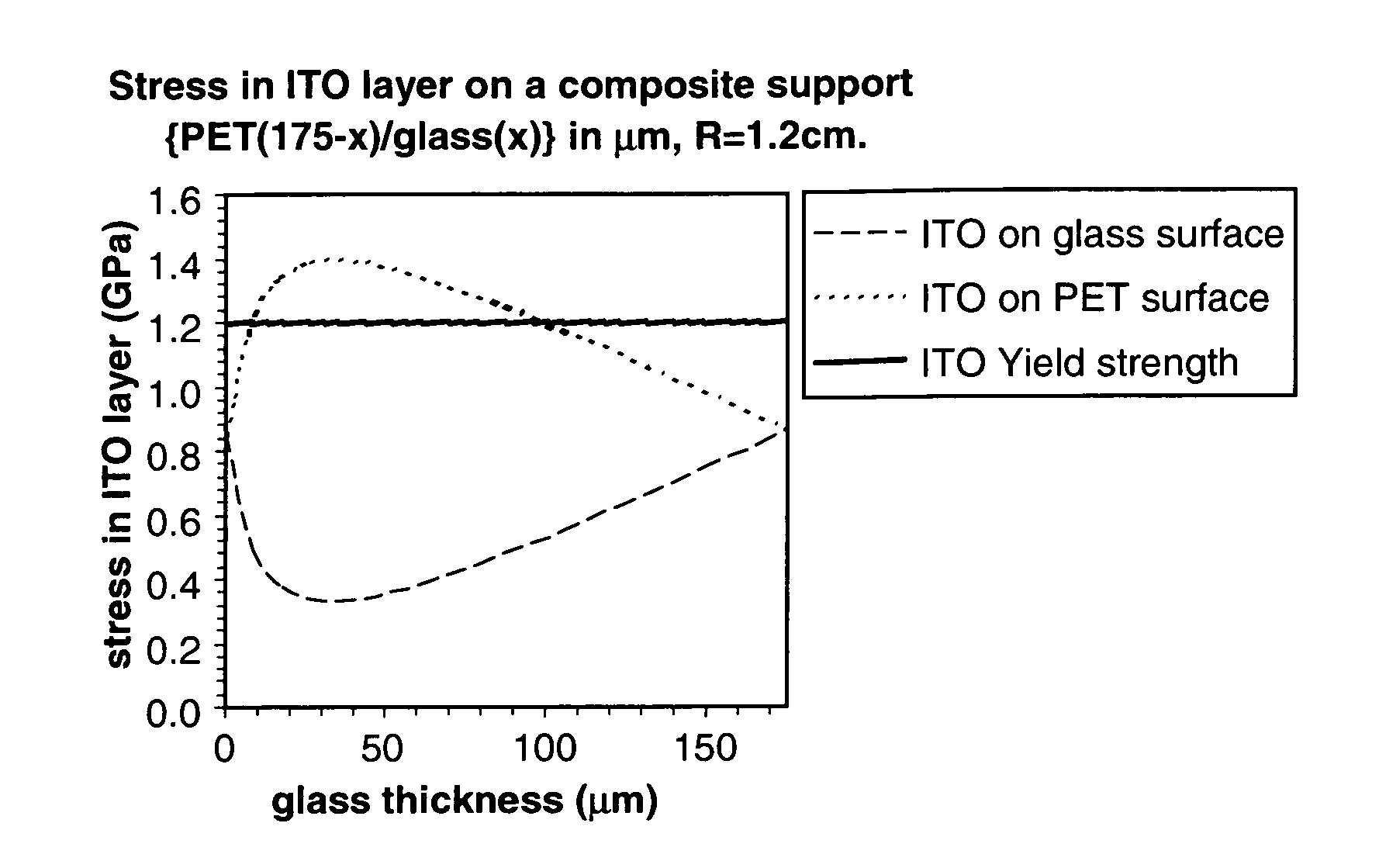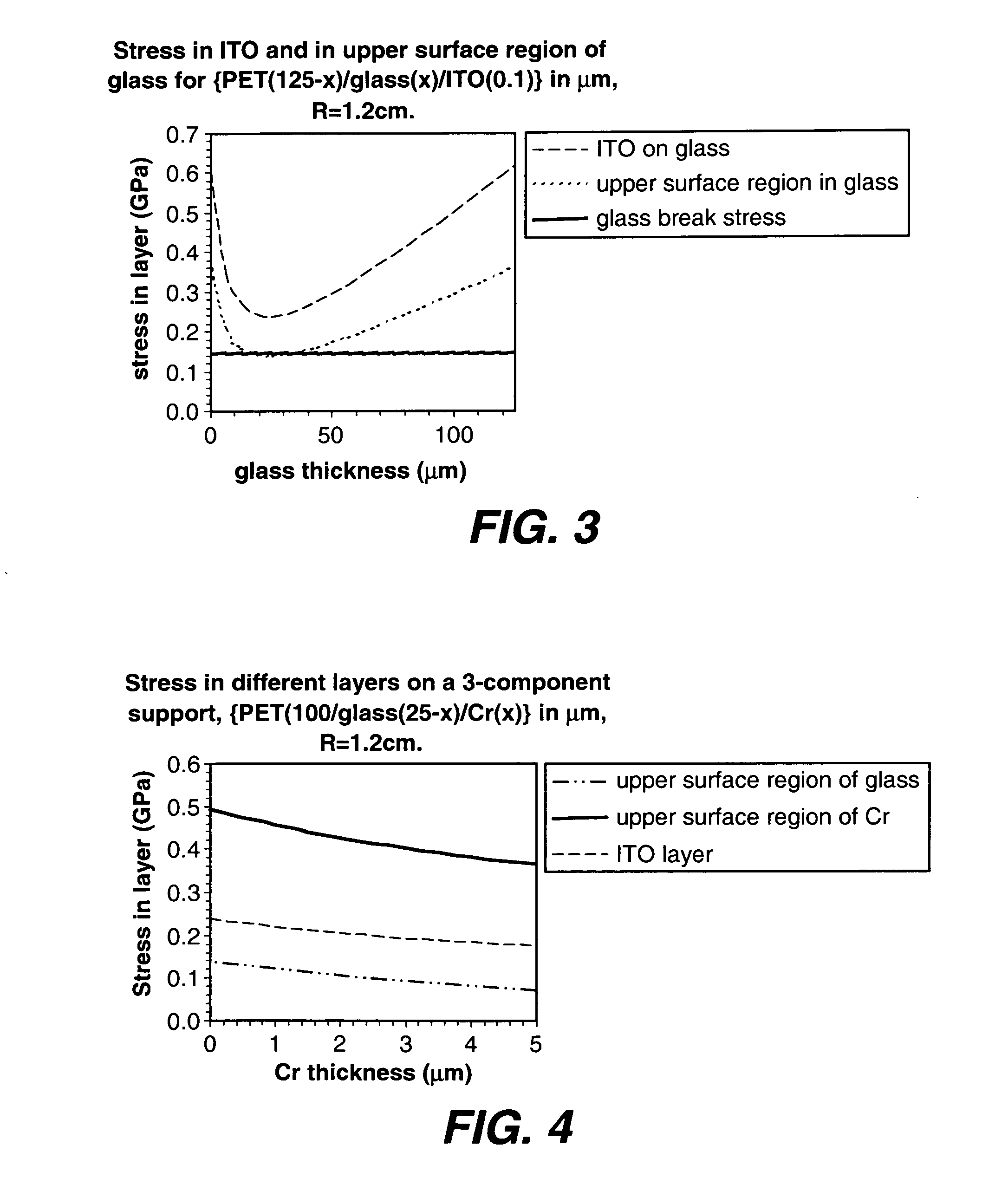Multilayer devices on flexible supports
a multi-layer device and flexible support technology, applied in the field of flexible support, can solve the problems of increasing manufacturing cost, affecting the flexibility of the substrate, and affecting the stability of the device, so as to achieve the flexibility and transparency of the substrate, and the stress in the thin layer of an element in accordance with the invention. significant
- Summary
- Abstract
- Description
- Claims
- Application Information
AI Technical Summary
Benefits of technology
Problems solved by technology
Method used
Image
Examples
example 1
[0040]A composite support comprising two layers: PET and flexible glass, having a constant total thickness of 175 μm is subjected to applied stress with a tight bending radius of 1.2 cm. The stress in a thin ITO layer deposited on one, or the other, of the two surfaces of the support, can be simulated. The result is shown in FIG. 1, in comparison to the yield strength of ITO. In the case of ITO deposited on the PET surface, all proportions cause an increase in stress in the ITO over the 100% glass, or 100% PET, compositions. In the region around the maximum, the yield strength of ITO is exceeded. On the other hand, if ITO is deposited on the glass surface, there is a clear minimum of stress for the same proportions. Clearly, it is preferable to deposit ITO on the glass surface to protect the ITO integrity. These results are summarised in Table 1.
TABLE 1Calculated stress in a thin ITO layer on different PET / glass support compositionsfor a radius of curvature of 1.2 cm. The moduli of ...
example 2
[0043]In this series, a composite support comprising 3 layers: {PET / flexible glass / chromium} of total thickness 125 μm, the layer ordering shown, and subjected to a bend radius of 1.2 cm. Chromium has a Young's modulus value of 248 GPa, and a breaking stress of 0.41 GPa. FIG. 4 shows the effect of an additional chromium layer to the support on the ITO stress, and in the regions of highest stress in the glass and chromium layers of the substrate. The starting position (Cr=0 μm) approximates closely to the optimum position in shown in FIG. 3. As the proportion of the chromium is increased at the expense of the flexible glass layer, the stresses in the three regions: the upper surface region of the glass nearest glass / Cr interface, the upper surface region of the Cr nearest the Cr / thin multilayer interface, and the thin ITO layer, are all reduced. However, the introduction of chromium requires that the breaking stress of this material (0.41 GPa) is not exceeded—in this example a layer ...
PUM
| Property | Measurement | Unit |
|---|---|---|
| thickness | aaaaa | aaaaa |
| thicknesses | aaaaa | aaaaa |
| thickness | aaaaa | aaaaa |
Abstract
Description
Claims
Application Information
 Login to View More
Login to View More - R&D
- Intellectual Property
- Life Sciences
- Materials
- Tech Scout
- Unparalleled Data Quality
- Higher Quality Content
- 60% Fewer Hallucinations
Browse by: Latest US Patents, China's latest patents, Technical Efficacy Thesaurus, Application Domain, Technology Topic, Popular Technical Reports.
© 2025 PatSnap. All rights reserved.Legal|Privacy policy|Modern Slavery Act Transparency Statement|Sitemap|About US| Contact US: help@patsnap.com



